Does recycling work?
This week we’re diving into the bins and sorting through the rubbish to figure out: what’s going on with recycling? Many countries like the UK produce far more recyclable waste than they can deal with, and ever since China stopped importing most types of rubbish last year, we’ve seen crisp packets and margarine tubs piling up in illegal dumps abroad. So is our recycling system still working, and what does the future hold? Plus, in the news, a new drug that tricks the flu, and the artificial leaf that can turn carbon dioxide into fuel...
In this episode
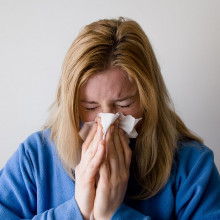
00:54 - Drug that tricks the flu
Drug that tricks the flu
AJ te Velthuis, University of Cambridge
With winter approaching, here’s a piece of good news. A new, experimental drug that can knock-out flu and other viruses has been developed by scientists in America. Called EIDD-2018, it works by mimicking one of the ‘letters’ that make up the virus’ genetic code. When the virus grows, it accidentally uses the drug molecule instead of its own genetic letter, introducing genetic ‘spelling mistakes’ that are lethal for the virus. Cambridge University’s AJ te Velthuis, who studies how viruses grow but wasn’t involved in the present research, took Chris Smith through what the US team have done…
AJ - Flu is a massive problem for human health and also for our economy. We have vaccines but they're only 20 to 60 percent effective, and the virus still kills a lot of elderly and young people every year. We have some antivirals, but the virus is constantly getting resistant to them. So we need a new drug that can help us fight a new pandemic.
Chris - And some of these antiviral drugs are not actually that good, are they? They're not the viral equivalent of when you give penicillin to someone with meningitis and save their lives. These drugs, they work a bit but they're not brilliant.
AJ - Exactly, they're not very effective. And as I said, the virus can get quite easily resistant to them and then their efficacy is completely gone. This group has been looking to find a nucleotide analogue. So the viral genome consists of nucleotides. They have names and usually they’re abbreviated as A, G, C, and U.
Chris - These are genetic letters?
AJ - These are indeed genetic letters. And the drug mimics the C letter. The virus can incorporate that into its genome; this results in a mutation, and this can lead to misfolding of viral proteins, or even completely not-working proteins.
Chris - I get it. So you would give cells that are infected with the flu this molecule, and when the virus is making copies of its genetic information it mistakes this one - that’s the drug - for the chemical it should be putting in, and it messes up the sequence of the viral genetic information.
AJ - That is correct.
Chris - How have they tested it so far?
AJ - So they've tested it in a number of ways. What the scientists first did was add a drug to cells growing in a petri dish. Normally the virus would kill these cells, but in the presence of the drug it wasn’t able to. The cells were basically healthy and cured. Next they moved to animal experiments, ferrets that they also gave the drug to. Normally when these ferrets get infected with the virus they develop fever, start coughing, sneezing; but in the presence of the drug the fever disappeared much more quickly and they didn't have as much virus particles in their airway system.
Chris - And critically, were the animals harmed by the drug? Because one’s always very worried about side effects - all drugs have side effects.
AJ - They didn't see evidence for this. The cells remained healthy in the presence of the drug for a very long time.
Chris - One of the issues with treating the flu is that the viruses evolve to become resistant to drugs, in the same way the bacteria evolve to become resistant to antibiotics. Did that happen here? Did the tests on the cells in the dish or on the ferrets actually produce any viruses that were resistant?
AJ - So that's a very good question. There is evidence that influenza can get resistant to drugs like this new one, so they did specific experiments to test this. They added virus to cells containing the drug and looked for resistance mutations; and they didn't find any. So that is very, very promising.
Chris - Do we know why?
AJ - It could be that it is very difficult for the virus to make a resistant mutation. Maybe it needs to mutate at a couple of sites at the same time to be able to cope with the drug. And that just takes time, and that wasn't seen or mimicked in this experiment.
Chris - Why is the virus fooled by this drug that it accidentally shoves into its genetic information, and our own cells - which also have genetic information on them using similar chemicals - aren’t?
AJ - This drug is incorporated by an enzyme called a polymerase. And all cells and all viruses have polymerases, but they're all slightly different. And it seems that drug just binds better to the flu polymerase than to a human one.
Chris - And do you think that the differences that they saw in the ferrets would actually be clinically significant? So if that were a patient, and a patient responded the same way the ferrets did, that actually this would translate into a real benefit clinically?
AJ - So in their experiments they took along a control, and that control is currently available over the counter: it's Tamiflu. And what they saw in the ferret experiments was that their drug works better at reducing fever and minimising clinical symptoms than Tamiflu. So that is very promising.
Chris - One of the attractions of Tamiflu is: you can pop a pill. You don't have to inject this stuff. Is it the same for this drug or would this be an injection?
AJ - In theory this could also be provided in the form of a pill.
Chris - And cheap? Easy to make?
AJ - That, I don't know.
Chris - That's a question of wait and see then.
AJ - Exactly. Although I would predict that this could be cheaply made. It's a small molecule so it could be scaled up quite easily.
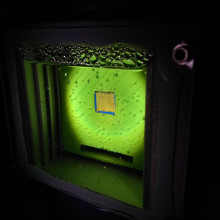
06:20 - Artificial leaf turns CO2 into fuel
Artificial leaf turns CO2 into fuel
Erwin Reisner, University of Cambridge
One of the challenges we face when it comes to climate change is not just how to reduce carbon emissions, but how to scavenge back some of the carbon we’ve already put into the atmosphere... ideally without compromising our standards of living. And this week scientists at Cambridge University unveiled a technology that might help to achieve these aims: it’s an ‘artificial leaf’ that, like real leaves, uses light to turn carbon dioxide into a useful fuel - in this case a mixture of carbon monoxide and hydrogen called “syngas”. Katie Haylor went to see it in action with its inventor, Erwin Reisner...
Erwin - We have demonstrated that we can convert the greenhouse gas carbon dioxide together with water into an energy carrier which is known as syngas. Syngas is a gas mixture made out of carbon monoxide and hydrogen, currently used for methanol synthesis for example, you can also extract the hydrogen from syngas to make fertilizers. We are excited about syngas because syngas can be converted to liquid carbon-based fuels, essentially gasoline.
Katie - Let's take a closer look then. So on the desk in front of us is a box. Is that plastic? It's transparent in nature and then there's lots of nuts and bolts and things going on. Separately you've got a little square with some wires coming out of it. Can you explain what is happening step by step?
Erwin - Absolutely. So inside the box, we have this artificial leaf which means this is electrodes, and the electrodes now take up the light, and this energy from the light is being used to drive our catalysts.
Katie - Is the light being absorbed? What's going on? What materials are we talking about?
Erwin - Yes it's being absorbed by semiconductors, a semiconductor can absorb light, in our case the semiconductor - rather than producing electricity - we use the energy to drive a catalyst to make syngas.
Katie - It's been described as an artificial leaf. And on the cycle over here I couldn't help but pick up this beautiful, green, autumnal leaf in front of me. How does this relate to what you're doing?
Erwin - We try to adapt the concepts from photosynthesis and in our case we also have a leaf configuration, that's the quite thin platelet, if you like, known as an electrode. And here we also take the carbon dioxide, but we do not produce sugars. We want to produce gaseous or liquid products.
Katie - So you've got a box which has carbon dioxide pumped into it through some water or an aquaeous solution. Then you've got your “leaf”, which has got some semiconductors in it which absorb the light and does some clever chemistry with the light on some catalysts in the leaf. And that is how we get the syngas?
Erwin - That's correct. And it's really that the choice of all these materials and the combination that make this a functional system.
Katie - What about a cloudy day? What about winter in the UK?
Erwin - So one of the strengths of the system is that it does not rely on very strong or high light intensities. It can also operate under cloudy days or even in the winter. So quite low light intensity situations.
Katie - Now why hasn't this been done before? What are the current technological or scientific barriers?
Erwin - The artificial leaf contains a very large variety of different elements, very unproblematic elements, but it also contains a range of problematic or poisonous or rare elements. This would for example be lead or silver.
Katie - OK. So would the idea be to swap those out?
Erwin - Yes that's what we will do in the next stage. So we know precisely which layers to replace into substitutes and we will look for replacements.
Katie - And once we've got the syngas, how do you go from that to fuel? How green is that process?
Erwin - So this process is established. It's known as the Fischer–Tropsch process and with certain high temperature and catalysts you can convert the syngas into the liquid fuel. This is something we can in principle also do sustainably.
Katie - Is it scalable?
Erwin - We hope so. So there are many limitations at the moment. The stability is not high enough and also the efficiency is not high enough. But we hope with further development we can improve on these.
Katie - How would you see this kind of technology being used?
Erwin - We see there's still a lot of challenges ahead. We cannot promise that this will be implemented in a couple of years. We recognise for real commercial application there are probably decades of development needed. But I think there are many possibilities. One way will be to use it on a very large scale, centralised energy production. But there's also a possibility for off-grid or localised uses. So I don't see a reason why this can not be a smaller scale device that generates energy where there's no grid.

11:10 - Footballers and neurodegenerative diseases
Footballers and neurodegenerative diseases
Willie Stewart, Glasgow University
It turns out that if you become a professional footballer, your risk of Alzheimer’s Disease goes up five fold! Unless, that is, you play in goal, which seems to be a bit safer. These are the results from a new study by Glasgow University’s Willie Stewart. He tells Chris Smith how they discovered this, and why it might happen...
Willie - To do this properly, you really need a large core of people to look at. You need a large study population. So we looked at a study population of just over 7000 former professional Scottish football players, and we compared them to people in the community who were as near as we could make them there. So they were born in the same year, they lived in the same postcode areas, but they've never played professional football, and we dug into their health records to see how they were dying.
Chris - And what trends emerged?
Willie - The headline is that people who participate in professional football were more likely to die of neurodegenerative diseases and dementia but three and a half times greater risk. As well as that risk of neurodegenerative disease, we saw the other health measures looked better, so they had less cardiovascular disease, less death through some cancers, and that resulted in a small lengthening of life span, so our footballers were living for about three years longer.
Chris - And it wasn't just because they were living longer that they were succumbing to the dementia. Were they getting the dementia at an earlier age than one would anticipate, or were they at least getting the dementia when other people who are equivalent to them but not footballers were not getting dementia?
Willie - That's a very valid point. That was one of the first questions we asked because here we're seeing our footballers doing better, living longer. So maybe, what we were reflecting was, that older age population where dementias come in. What we could do, because we had a properly set up study with lots of individuals to look at, we factored into the benefits they were getting in cardiac disease and cancer. So we could factor those in, and adjusting for that, they still had three to half times higher risk of death through neurodegenerative diseases.
Chris - And was it right across the spectrum of neurodegenerative diseases? Because that term can embrace a large range pathologies, can't it?
Willie - Exactly. That's the headline, ‘dying of neurodegenerative diseases’. We looked beneath that to people who were dying with them. The way the death certificates are written, they have at the top line the actual direct cause of death, that maybe a heart attack, say, and then beneath that the doctor will also record other diseases and conditions that were there at the end but may not have contributed to death. And that's where things like Alzheimer's disease may appear. Using that, we could look in more detail at individual diseases, and when we did that, what we found is that Alzheimer's disease risk was the highest. Footballers were more likely to die with Alzheimer's disease up to a factor of five times more likely. Then motor neurone disease, which is a rare condition but nevertheless, we saw about four times as often in our former footballers down to Parkinson's disease where there was a doubling of risk.
Chris - Does it matter where on the pitch someone plays? Because arguably in some positions they're going to get exposed to more head injuries than in others.
Willie - Yes. We looked at outfield players against our goalkeepers. Our goalkeepers had less than half the likelihood of getting drugs for dementia.
Chris - I know it wasn't part of the scope of this study, which was very much observing relationships between two different groups of people, but why do you think people who play in these certain positions or play these sports are at these exaggerated risks of getting these sorts of conditions?
Willie - That's the challenge now, to try and identify what it is about the brain injury event that somehow changes the brain. There's a number of things that we're recognizing though, that happen at the instant of injury. For instance, the blood brain barrier can break down at the time of injury and can persist for some time. We see inflammatory changes in the brain that can happen in some of these individuals and can persist for some time. And we also see that the white matter, the fine fiber tracts that run from the brain cells, can become stretched and damaged and broken and that again can persist and evolve over some time. So there's a few candidates that we can work with, but at the moment we don't have the smoking gun, the one thing that we can say ‘this is what happens’ and ‘this is what we're chasing down’.
Chris - Can you say, though, what would be the best way to mitigate this? Is it just to say to people ‘we've got to ban heading of the ball’? Because the Football Association, or representatives of that movement, have said ‘oh well, we're going to have a special monitoring for people who have a concussion or have a head injury on the pitch’. But from what you've been saying, by then the horse has bolted, hasn't it? It's too late, they've already sustained what could be eventually a life changing injury when they're older.
Willie - I think it's important to say that one concussion, one mild brain injury, we haven't got evidence yet would be a risk later in life. So it's still okay to bang your head and not worry too much about dementia. That's important, but it's the cumulative effects. While we may take years to figure out what the pathology is that's driving this, I think there's enough in the evidence from our recent publication and work going back several years to say ‘can we do something to reduce the cumulative small impacts that may not even cause any significant injury that we can detect?’, so ‘can we cut back a bit on things like training for heading during the week? do we need to do as often as we do now? do we need to do as many times in a week as we do now?’. It’s the ways of just making those changes that could be the difference in the long run.

17:49 - Stopping cybercrime with a warning
Stopping cybercrime with a warning
Ben Collier, University of Cambridge
The world of online gaming is huge among teenagers, and is becoming a hotbed for cybercrime. One particular type of hack is a distributed denial of service (DDoS) attack, where a victim’s internet connection is flooded with so much traffic that it shuts down. Gamers are increasingly using these attacks to gain an advantage by knocking their opponents offline. But this activity is illegal, and it can be very disruptive for other innocent Internet users, who can be taken down in the crossfire. So Ben Collier, from the University of Cambridge, has been looking at which sorts of intervention actually work; putting people in prison and stiff penalties don’t seem to make much difference. But taking down the computer networks used to do it works quite well, but best of all is just sending simple warning messages to the people commissioning the attacks. Adam Murphy heard why...
Ben - We've been looking at a particular type of cyber crime called a DDoS. It's like when you go to visit a music festival website when the ticketing is open and everyone crashes the server because there's too many people going on. It's basically like that, but it's been weaponized as a form of cyber attack. So what we've done is we've used a bunch of detection techniques looking at what the police are doing and seeing whether or not it works.
Adam - So how would you go about actually doing that to someone else's computer?
Ben - There's two ways you can do it. So the first one is called a reflection and amplification attack. That's where you look for computers on the internet that are poorly configured and you send them a signal, but when you send them the signal you pretend to be the victim. So you send this signal to them. It's quite a small signal, doesn't take up much resources for you, and they send a very very big signal back, but instead of sending it back to you they send it back to the victim. The second way is using botnets to essentially infect other people's computers using computer viruses and get control of them, and then use these to send lots and lots of these signals and packets of information and overwhelm people's computers.
Adam - Why would you want to do that? So what are people looking to use these for?
Ben - There's a range of different reasons why you might want to knock someone offline. So first and one of the most common ones we see is computer games. So if I'm playing an online computer game, like Call of Duty or something, and I am not very good at it and my opponent is beating me a lot.
Adam - I can relate to that.
Ben - Yeah me too. Then I might want to annoy them or get back at them by booting them off the Internet, and then I would use this service to find out their IP address and then knock off their home connection basically. But the problem is then you might knock off everyone else who is on, you know in their village, or wherever that's on the same sort of service basically. There's some more sort of nasty stuff as well, although those are obviously serious too. So you might want to blackmail a business or another website you know by saying we'll take you offline unless you pay this much money, and then we get into the really serious stuff, so you can use this against infrastructure. For example, you could use it to take a hospitals public systems offline, any kind of public service or things like that, which has a public facing IP address. You can use this to take it offline basically.
Adam - Why do the interventions that work, so taking down the infrastructure and messaging people, why do those interventions work so well?
Ben - So for the infrastructure we think that's because it's a very centralized market. So actually there's around about 50 of these services, you know 50 or 60, doing any real number of attacks at any given time. But actually there's a lot of reselling going on. So there's a small number of people, maybe 10 to a dozen, they're actually running most of the infrastructure, a small number of services, and they basically sell on to the other services their capacity. This means that if you take down the infrastructure, it causes a lot of knock on effects for everyone else, and actually the people that run the infrastructure, so the server managers, their jobs really really boring.
So they're actually quite easy to dissuade, and when we saw this big FBI sting actually we saw lots of these server managers who the networks depend on say yeah I'm done, I'm not interested in this anymore. The messaging interventions a bit more complicated. I think possibly the reason behind it is a kind of like digital guardianship sort of thing. One of the things people often say about cybercrime is that it's often difficult to know online what's legal and what isn't, or when you've crossed that boundary, and I think for a lot of these people there's a lot of basically, young kids, doing this stuff who are doing this but they don't really realize it's illegal.
Actually in these communities a lot of people say ‘oh it's not illegal it's fine’, ‘you know the police don't care about this stuff’. But I think if you're a 15 year old kid and you're sort of searching for this stuff, these adverts hit you basically as soon as the thought was forming in your mind that you want to do it. Bear in mind the thing you're about to do, that we can see you about to do, because you're googling it is illegal, just so you know. So it's kind of like a tap on the shoulder basically saying we're watching you, and we think that the timing and the target nature of the adverts is actually causing this effect.
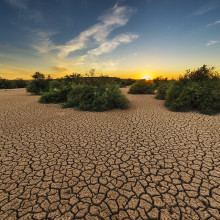
22:54 - Spray-on drought resistance for plants
Spray-on drought resistance for plants
Jim Rowe, University of Cambridge
The Earth’s climate is predicted to heat up over the coming years, and droughts are expected to become more common. They’re a big problem already for some farmers, costing thirty billion dollars every year. But can science help? The answer is possibly, thanks to a new spray-on treatment - called “opabactin” - that artificially activates a plants’ natural drought responses. The idea would be to use it to prepare plants before disaster strikes, making them more resilient when the worst happens. To find out how it works, Phil Sansom met up with Cambridge University plant scientist Jim Rowe, who wasn’t part of the research but works on similar aspects of how plants grow…
Jim - So they've made a new chemical that activates the plant's own drought stress responses. When you spray the plants with this chemical they stay greener for longer when you then stress them.
Phil - What is this chemical?
Jim - So actually what they did was they took an existing chemical that occurs in plants that's actually a plant hormone called abscisic acid. And they then looked at the molecule it binds to, which we call a receptor. They looked at lots of different chemicals and designed a new one that binds the receptor even more strongly than abscisic acid.
Phil - So it does something similar to something that actually exists in nature already?
Jim - Yeah, yeah. So we would call this a hormone analogue. Plants normally under drought stress and stressful conditions will produce this hormone, abscisic acid. And this basically will tell the rest of the plant: water is scarce. We need to look after it and try and survive this.
Phil - Now call me crazy: I knew animals had hormones. I didn't realise plants had hormones too!
Jim - Yeah, yeah, and they do a lot of similar things to animal hormones. So they might control the way that plants grow and develop; stress responses such as drought; or response to pathogens; or response to being eaten.
Phil - Now tell me, how does abscisic acid work?
Jim - Abscisic acid is, we think, mostly made in the leaves. What it does is it will close the small holes in the leaves, that are called stomata, to help the plant lose less water in response to drought. It can also control the way that the plant grows and develops under stress. So for instance, a small amount of abscisic acid will stop plant roots growing sideways and make them grow down to try and get to deeper water.
Phil - It just does loads of different things that help it when there's not much water?
Jim - Yeah. It has a whole-plant effect and does lots of different things in lots of different places.
Phil - That's amazing!
Jim - Yeah, yeah I think so too.
Phil - So does this new compound work in exactly the same way?
Jim - It's hitting the same receptors that abscisic acid is. It won't happen in exactly the same way, quite possibly, because there may be other signals that would normally happen in the case of a drought. But it's mostly activating the same response.
Phil - Are there any downsides for a plant if you give it all these drought responses?
Jim - Yeah, yeah there are. It takes quite a lot of resources and investment to protect yourself from these stresses. And so if you're shuttling all your resources to protection, you might get short and stunted plants.
Phil - But it's worth it?
Jim - If a drought is coming along, then yes.
Phil - So this must be useful when there are actual droughts out in the world.
Jim - I think that's what the authors are hoping. Obviously this hasn't been tried outside yet and it's mostly early days, but this sort of approach could lead to much higher yields in water-poor years. Drought is one of the leading causes of crop loss globally, and the trouble is, whereas we can protect the weather next week, we might not know that in a year's time there's going to be a massive drought.
Phil - Yeah. And next week even is a bit of a toss-up. Do you think in theory, you could just spray this on your crops, how long would it protect them for?
Jim - The initial work in the paper shows that if you spray a high concentration you will maintain an abscisic acid-like response for five days. Now I don't know how long after that it would carry on doing it but that, the idea that you spray it before the drought and you get the plants prepping first, might make a big difference in survival later on.
Phil - And will this work for any plants?
Jim - It will certainly work for the crop plants that they've tried it on. I think it will work for most plants because water relations are so integral to colonising land. Abscisic acid seems to have evolved a long time ago so nearly all plants respond to abscisic acid.
Phil - Just like they'll respond to this new thing?
Jim - Exactly.
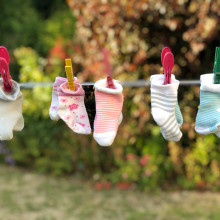
28:24 - Mailbox: a new theory of dark matter
Mailbox: a new theory of dark matter
This is the part of the show where Chris Smith and Izzie Clarke read out your correspondence...
Chris - We've heard from Kay. She's in Australia and she's written in with her own theory about dark matter. She says she thinks it's just all those lost black socks that have disappeared from the world, they had to go somewhere. You're an expert on that, Izzie, you actually looked at the maths of lost socks earlier this year...
Izzie - Yes, well I was thinking that as I was hanging up my washing today, I had three different black socks, none of which were in a pair, so I'm right with Kay on that one.
Chris - Well, she says of course no one can see the dark matter because no one can find the dark socks. But Rob Eastaway, who is a mathematician, told you that the solution to the black sock problem is just to buy exclusively black socks and then you never know you've lost them.
Izzie - Well, absolutely. Or check the weird little filtration part of your washing machine and they might be there. But don't go around disassembling your washing machines is my advice.
Izzie - And listener John has a correction to our piece last week about the nano-guitar string. In the piece, it was wrongly said that Jimi Hendrix used feedback by moving his guitar towards a microphone, whereas he actually just moved his guitar, which is a microphone of sorts, towards the amplifiers. Thanks for pointing that one out.
Chris - So if you have any comments, feedback, criticism, or suggestions for the program that you'd like aired on the mailbox you can send that in now. It's chris@thenakedscientists.com. You can tweet @nakedscientists, we've also got our Facebook page, of course, you go to facebook.com/TheNakedScientists, and we'll pick them up.
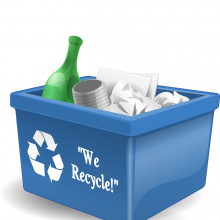
30:51 - Where does recycling end up?
Where does recycling end up?
Bryony Rothwell, RECAP
This week we’re diving into bins and sorting through the rubbish to figure out what’s going on with recycling. When you put something in the recycling bin, where does it actually end up? Bryony Rothwell, the Partnership Manager for RECAP - an organisation that coordinates waste across Cambridgeshire and Peterborough - joins Izzie Clarke and Chris Smith to explain...
Izzie - Now we've been told that most things can be recycled. I've been shopping and, Bryony, I hope you can tell me where some of these things will end up if I recycle them. First up we've got a milk bottle here, and that's made up of a hard plastic. Is that a problem?
Bryony - No, this is a very recyclable material. It's a plastic called HDPE and it’s recycled in the UK back into milk bottles. There's a very good recycling system for that material, as long as it's presented in your curbside being clean, washed out, and squashed with the lid back on. Other materials such as cardboard, if it's in good quality, not contaminated with food, that will go on to be made into more cardboard which will be made into packaging for cereal. Anything that's presented in your recycling bin in a high quality way, so it's not wet, it’s empty, it's clean and squashed, it will get made back into recyclable products.
Izzie - So why is this idea of it being clean so important?
Bryony - Any contaminant that goes into the recycling bin, so that would be liquids or food, can spoil the other quality of the materials that are in that kerbside recycling. And so when it goes through the process and the reprocesses get it, the more they have to remove the contaminant to actually get the quality of material to recycle into a new packet. Anything that's food that's adhered to that container or box either spoils the box, if it's cardboard, or it means they've got to wash it more. So it just takes longer and costs more money, and it doesn't make it viable.
Izzie - Right, I see. And finally on my shopping list is also a bag of pasta. I get through so much of it and it's come in this quite flexible wrapping. So where does that end up?
Bryony - Unfortunately, these usually are bags of composite laminates and the type of recycling that they would need to actually separate the plastics out is very complex. Unfortunately at the moment we aren't able to do that, so they often will just go into the gray bin instead of the recycling.
Chris - Just wondering, Bryony, because this sounds wonderful. I'm quite surprised to learn quite how much of the material is recycled, as you were just saying to Izzie there. But of all of the rubbish, and we must have some idea as to how much rubbish is being generated, what fraction currently is going the right way and is turning back into new milk bottles and so on?
Bryony - In Cambridgeshire and Peterborough we have a recycling rate 59 percent across all the local authorities.
Chris - Is that high?
Bryony - That's a reasonable amount, I mean, national averages are around the mid 50s.
Chris - Indeed, because looked at another way, if it's a 50 percent recycling rate, this milk bottle of Izzie’s here, that means that for every two of those that get made one doesn't end up in landfill but one does.
Bryony - Unfortunately, yes, that is the case and there is a lot of material in our residual bins still that can be recycled that isn't being. So there's about 10 percent paper in Cambridgeshire that's not being put in the recycling bin, about 10 per cent plastic. A lot of the heavy materials are coming out, so glass and metal we seem to be extracting from the bin, but there's about 30 per cent food in your gray bin as well, which could be composted but people are just putting in landfill at the moment.
Chris - Alright, so included in your figures for what we're calling recycling includes stuff that could go in the compost heap.
Bryony - Absolutely.
Chris - Because I traditionally regarded recycling as you know physicals like plastics and cardboard. That's interesting.
Bryony - No, it’s anything that's contributing to obviously reusing materials. Then, if we can reuse that food for conditioning for the soil, then making it into compost is a better use of it.
Chris - There's obviously a cost to recycling as well as a cost to manufacturing from the get go, and in order to make people use recycled things, it's got to be both economically and energetically favourable. There's no point in recycling things for the sake of just recycling and actually doing more damage to the planet. So, how is that calculation made?
Bryony - For things like your plastic bottle, 50 percent less energy is needed to make a recycled bottle compared to a virgin plastic bottle.
Chris - That’s quite high.
Bryony - That is quite high, yes. So it's really worth putting your plastics in your recycling bin in the right condition.
Chris - So are there any materials then for which the equation is less obvious, or for which it's less beneficial? What about things like glass?
Bryony - Glass, again, highly recyclable as a product, and metal likewise. The difficulties come with things like cardboard paper, where you get contamination and you have to take out that material, and it's more sorting and sifting to get the clean product through.
Chris - One of the key things about this whole recycling process, though, is you've got to have end user engagement. It's all down to, and it's very dependent on, people like me participating actively and proactively putting stuff in the right bin, isn't it? So, as a member of my family said to me today when I said we're going to come and talk to you about recycling, and she said ‘why is there no machine that could just take a bin and sort it all out? Problem solved’.
Bryony - Well, a lot of the waste that goes into the blue bin or the mixed recyclables is sorted by machine at the other end. Unfortunately, the best recycling rates in the world are usually where the human being sort it before they put it in a bin. Wales is the third highest recycler in the world and they have a kerbside sought process that means that human beings have to put it all in the right bin before.
Chris - Very expensive, though.
Bryony - Very expensive, unfortunately, but that's one of the things that the new resources and waste strategy is looking at, whether local authorities should move to that kind of system.
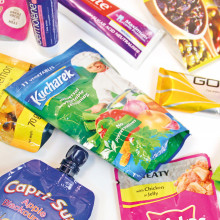
36:17 - Recycling the previously non-recyclable
Recycling the previously non-recyclable
Carlos Ludlow-Palafox, Enval
Lots of cat foods and certain drinks come in pouches made out of plastic aluminium laminate. This is a decent material environmentally, because it’s so light compared to pure aluminium, so it saves resources and fuel during transportation. But until recently it couldn’t be recycled at all. That’s changed thanks to a company called Enval, which has developed a process to separate the plastic from the aluminium. And supposedly this technique both powers and pays for itself. Phil Sansom went to visit the plant and meet Enval CEO Carlos-Ludlow Palafox...
Carlos - We have baby food pouches, we have paint tubes, we have sashes, bags for instant coffee and pet food pouches. Plastic aluminum laminates are being used for all sorts of products and what we have managed to do is to create a process that actually renders these things, plastic aluminium laminates, recyclable.
Phil - Before they weren't recyclable?
Carlos - Before they weren't recyclable. We separate plastic from the aluminium. It's a chemical separation in the sense that we pyrolyse the plastic. Pyrolysis is a process where you have something that could burn, but you apply that energy in the absence of oxygen. Therefore, that's something that could burn doesn't burn because there's no oxygen, it just degrades into other things. In the case of a plastic, if pyrolyse the plastic you heat it up to very high temperatures, in this case around 600 degrees, and because the plastic came from oil in the first place, what we do is to produce an oil similar to what you have in crude oil. So you are turning back plastic into its original crude oil. We feed the packaging into the shredder. All the pouches, sachets, tubes etc. et get shredded into flakes and that goes into the oven. We use microwaves to heat up the reactor where the reaction takes place.
Phil - Microwaves?
Carlos - Microwave induced pyrolysis, correct. Now some of the listeners, I am pretty sure will think how on earth are you heating up plastics using microwaves, when I know that if I put a plastic dish with soup in the microwave in the kitchen the soup heats up the plastic doesn't? So how do we do it? Well we heat up carbon with the microwaves and once that carbon is hot then we start the addition of material.
Phil - So the microwaves don't actually heat up the thing that you're changing?
Carlos - Correct. So the microwaves heat up carbon and then the carbon transfers the heat by conduction to the material, the plastic. The plastic pyrolyses. The gases that are the paralytic gases escape the reactor and we cool them down. About 75 percent condense into an oil, and around 25 percent of what was plastic remains as a gas, and that gas we feed into an electricity generator that then feeds the microwaves to produce the energy that we need for the process.
Phil - So you can use only a quarter of the petrol product basically to power the rest of the plant?
Carlos - Correct. The aluminum on the other hand, it forms flakes that then we melt and form ingots.
Phil - So all this that Carlos is describing happens inside a big industrial building where Enval has set up their plant. So I asked him to show me inside. Wow...
Carlos - Well this is it. This is where the magic takes place.
Phil - It's really, really big!
Carlos - For a pyrolytic process it is actually quite compact. That big box for all practical purposes is a very large microwave oven, much larger than the one that you have in your kitchen, two by two meters, and more importantly power is a hundred and fifty times more powerful than a than a house one.
Phil - How long would it take to heat up my soup in one of those?
Carlos - Less than two seconds.
Phil - By the way, what is that smell?
Carlos - It's the smell of oil.
Phil - Not that I'm not impressed, but let's get out of the noise and the smell.
Phil - Back outside Carlos shows me some of the end products of the pyrolysis. Pure flakes of aluminium or at least as pure as when the laminates were first manufactured.
Carlos - Lately what we have done is to actually do the melting of these flakes into ingots like this one that I'm holding in my hand. It's much more valuable to sell the aluminium as ingots than to sell it as flakes. The oil is also a very valuable product and we sell it as heating fuel, but one of the plans that we have is to use the oils for the production of virgin plastic. So full circular economy for the plastics as well, not only for the aluminium.
Phil - Where does a company like you fit into the way that recycling works in this country?
Carlos - Excellent question. Recycling is a very complicated world. When a new material comes out the way the sector normally is, is very slow reacting to those kind of things. What tends to happen is that companies that develop recycling processes need to prove over and over again that it actually works before the large waste handlers actually want to engage. We recently decided that we're not going to stop wasting time waiting for large waste handling companies to buy plants from us. We're going to put more plants ourselves.
Phil - But if it's the waste operators job to recycle stuff that can be recycled, why aren't they just picking this up?
Carlos - Well it's very complicated because some of the contracts between the waste contractors and the local authorities or the county councils are insanely long, 20 years long, and the waste composition of 10 years ago has nothing to do with the waste composition these days because brands change the kind of packaging that they use. So you say, well they have a duty to collect and recycle. Yes, certainly from a point of view when that duty is established in a contract. But if a new model comes in the middle they have absolutely no duty to collect absolutely anything. Even worse they have no incentive whatsoever, because for a waste handler whether a pouch of baby food gets collected or gets landfilled makes zip difference to him because they get money either way.
Phil - You are joking? There's no incentive for them to recycle something?
Carlos - Not necessarily for the waste handlers. A lot of the waste sector, the traditional waste sector, says why do we bother doing more complicated operations if we can just carry on pushing stuff into the ground. So unless they are forced to do it, they won't do it.
Phil - I find it quite shocking that it's not as simple as if you can recycle something physically, then you just whack it in your blue bin and it'll get to the people who can recycle it.
Carlos - No it's really really not that simple. Sometimes it has nothing to do with the materials.
Phil - So what's it like being in this industry?
Carlos - It is fascinatingly chaotic.
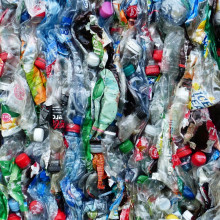
44:01 - The economics of recycling
The economics of recycling
Roland Geyer, UCSB Bren School
Recycling isn’t just a technological problem - it’s an economic one as well. At every stage, from individuals washing out juice cartons, to waste management companies selling great bales of recyclable plastic, it comes down to incentives. And some people are skeptical about whether it even works. Roland Geyer is one of those people - he’s a professor of industrial ecology at the Bren School of Environmental Science and Management in California. Adam Murphy heard his opinion of the state of recycling...
Roland - The only environmental point of recycling is to displace primary material production, which means that turning scrap into secondary material needs to be cost-competitive with primary material production, and also the secondary material needs to have technical specifications that are similar or ideally equal to those of primary material. For plastic in particular, the economics of plastic recycling simply don't work. And you could say it in two ways: you could say plastic recycling is too expensive, or you could say virgin plastic production is too cheap.
Adam - Does that mean as well that when you use something for plastic and you recycle it, it has to be used in something of lower quality at the moment?
Roland - Very often that is true. It is not necessarily true, but in practice right now the way we design our products makes it difficult then to get a clean, single-polymer stream of recycled material. The way we use it and collect it, it becomes contaminated. And plastic is a vast group of very different materials, so if you want to recycle plastic, you actually need to separate the different polymer types.
Adam - Why is it then that recycling doesn't reduce the amount of primary material that we use?
Roland - Unfortunately there’s not just a single reason, there are actually several reasons. First of all if you want a competitive recycled secondary material, you have a couple of hurdles that you have to take to get to that point. You need a well-designed collection system that allows you to then separate the polymers and keep contamination to a minimum. The next hurdle is you need good recycling technology. So you need something that really works for the type of scrap that you've collected. The next hurdle’s that you actually need a market for your secondary resource that you just generated. There are many recycled plastics that are not very desirable, so no-one really wants to use it to put it into their products. And to make things worse, even if you have a fairly desirable secondary material, there is no law of nature that... you know, physics doesn't say that if we increase our secondary plastic production, primary plastic production has to come down. This is a market-mediated effect.
Adam - If when we recycle something we introduce impurities, and we keep recycling, does that not mean even with the best of intentions, everything we have is going to end up in landfill eventually?
Roland - Every single unit of material that we produce will become waste. It's literally impossible to keep material in circulation forever. And the buildup of contaminants is one of the reasons why I firmly believe that the best you can do is get multiple cycles out of a material. But it's not even clear how many exactly. In fact with plastic, we studied globally the circulation of secondary plastic, we think that the vast majority of recycled plastic gets exactly one additional cycle, and then it becomes basically waste the next time around.
Adam - So given all that, what do you recommend we can do going forward?
Roland - I think we need to be more honest about what we would need to do and what kind of systems we need to establish if we really wanted recycling to work. And then the other thing I think which is at least as important is that we do need to remember that in a hierarchy of pollution prevention approaches, recycling is only the third best. Reduce, Reuse, Recycle. Recycling is third best. Really, if you have a reusable cup rather than a single-use cup, then you get many many many uses out of that particular piece of plastic, rather than having to recycle, trying to build a system that is able to recycle the single-use cup.
People think that it's mostly an engineering and a technical issue and I've come to the conclusion that it's actually mostly a social issue. By treating recycling mostly as a technical problem we’ll never quite come to the point of making it work. I think we need to start recognizing that the social dynamics of recycling are at least but probably even more important than technology and the science behind it.
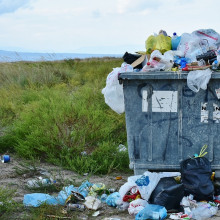
49:53 - Waste's life cycle: what's the future?
Waste's life cycle: what's the future?
Margaret Bates, University of Northampton
Obviously we shouldn’t stop recycling - so what can we do to fix it? With Izzie Clarke and Chris Smith to help untangle the future of waste is Margaret Bates, Professor of Sustainable Waste Management at the University of Northampton, who describes herself as “obsessed with anything waste-related”...
Margaret - I think it is working. The economics are necessarily the most important thing. The carbon benefits, the impacts on climate change are hugely important. I totally agree with him that the social aspects are really important as well. People buy something, use it and then go why can't I recycle this? Where as actually, we need to have the situation where when you're buying something, you factor into its end of life at that point. Comments were made earlier that our infrastructure really hasn't kept up, and it hasn't. Changes in waste over the next 20 to 30 years will need an investment of about 35 million, and to be honest when we're talking about big waste handlers they don't really exist anymore. They are resource management companies, they spend a lot of time and effort in making sure that the way we collect things is the best way to recover the value as much as possible.
Chris - Margaret, can I put something to you, because I was I was cleaning my teeth today...
Margaret - Good.
Chris - Yes indeed. My dentist would be delighted. Well actually maybe not because it means I make fewer visits, but I bought myself, a number of years ago, an electric toothbrush and I've been delighted with it. It’s lasted eight years, but now I've got to the stage where the battery has clapped out. It doesn't survive more than two nanoseconds away from the base station charging and I am going to have to throw it away. What infrastructure is in place to recycle gadgets like my toothbrush?
Margaret - There are a number of high streets where you can take your electricals to be recycled or you can look on Recycle Now, which will show you where you can recycle materials, but you don't necessarily need to buy stuff. So perhaps there is an opportunity to have a leasing model on a toothbrush where you don't buy it. They still own it and then when you've finished with it you give it back to them, and they swap it for another one that might be repaired or refurbished or just have a new battery in it.
Chris - I take it you're referring to the body rather than the brush head? You wouldn't want a second hand one of those would you Margaret?
Margaret - I really wouldn't want a second hand one. I'm not sure I'd want to use mine twice.
Chris - No, I mean the cynic in me is thinking is this engineered obsolescence to make sure I go and buy another toothbrush because it's not in the manufacturer's interest, is it? To make something, which if it works too well and lasts too long, they can't sell me another one? There's always going to be that tension isn't there with industry, where they want to make something that lasts a certain time which incentivises you to go and buy another one?
Margaret - But that's why we need good policy. Good - what’s termed - “extended producer responsibility”. So it incentivises things that last longer, that are easier to repair and easier to recycle at the end of their life.
Chris - So what fraction of goods and products are currently being built or designed with their end of life in mind at the outset?
Margaret - We have absolutely no idea really. End of life isn't a factor in the manufacture. We are getting better. So if you look at plastic bottles for example, the average recycled content of a plastic bottle is about 15 percent, but that's going up and there are government plans to tax people extra if they don't put a minimum of 30 percent recycled content in.
Chris - Have they actually gone in further up the food chain as it were and said, you can't design stuff before you've come up with a valid plan for how you're going to deal with it when it has died?
Margaret - That's what the extended producer responsibility legislation is about, but interestingly as a householder we don't have that. So there's a system called Pay As You Throw, where every wheelie bin produced in Europe since 1996 has a microchip housing in it, and in many countries householders are charged proportionate to how much waste they produce. Whereas you and I can throw away as much as we'd like and still pay the same amount of Council Tax.
Chris - Bit dodgy that though isn't it because it incentivises people to either fly tip or go and check it in someone else's bin and then your neighbor ends up paying for your rubbish, don't they?
Margaret - Well no not really. I mean if they put the price up of your shopping do you start shoplifting? Most people do the right thing and we'll try and change the behaviours to make sure they carry on doing the right thing, and this is really common throughout Europe and other parts of the world. Even tried it recently in Guernsey and its reduced the amount of weight people produce and that's what we really need to look at. We focus very much on recycling. Recycling isn't the top of the best things we should be doing, it's not even the second. So we should be reducing the amount of waste we generate and sadly charging people proportionately to how much waste they produce is one of the good ways of doing that.
Chris - I think the most poignant point that Roland Geier made when Adam spoke to him was was to say that there are lots of people who think they're doing the right thing by going and buying stuff that is labelled as recyclable, but just because it's recyclable as Brian is saying it doesn't mean it gets recycled, and so really what we need to do is to shift the mindset of people onto making that demand for things that have been recycled, not just are recyclable.
Margaret - Yeah. We need to start off by not buying things we don't need. If we do buy stuff, we need to make sure it's got a high recycled content. Then we need to reuse it as much as possible and then when we run out of any use for it, then recycle it. So it's part of looking at the whole lifecycle of how we interact with our stuff.

56:01 - QotW: Ice on the windshield
QotW: Ice on the windshield
Adam Murphy is answering this super-cool question from listener Mike...
Adam - It can be a real pain. One moment you’re just wiping your windshield on a cold morning, the next… you’ve got to go about taking all the ice off. But what’s going on? I reached out to Liz Thomas, paleoclimatologist at the British Antarctic Survey here in Cambridge, to find out.
Liz - This is the result of a phenomenon known as supercooling: the process of lowering the temperature of a liquid below its freezing point without it becoming a solid. This happens because they lack something to start the freezing process called a seed crystal.
Adam - This can happen to water bottles to. You can put them in your freezer and they won’t freeze! That is, until you give them a knock.
Liz - On a cold morning when the temperatures are close to zero, the water vapour in the air - or the dew on your windscreen - is in this supercooled state. The action of spreading the supercooled droplets over the cold surface of the windshield turns the water vapour into ice. This is because the windshield is generally colder than the surrounding air.
Adam - Sloshing the water around on your windshield then makes a point the water can freeze from. So you’re a superhero! You can turn water into ice with just your hand! But it’s not all so chill.
Liz - Another example of supercooling is freezing rain. In this case the rain droplets become supercooled in the upper atmosphere, but remain as supercooled droplets until they reach the Earth’s surface where they turn into ice. This can be a real problem for airplanes, where the ice can build up rapidly on the wings and make flying incredibly dangerous.
Adam - And as alancalverd pointed out on the forum, supercooled water can freeze in seconds. So thanks to Liz Thomas for giving an answer to such a n-ice question. Next week we’re answering this one from Vinnie…
Vinnie - I have read mosquitos have a preference for blood type and prefer people with Type O blood over those with Type B, or prefer Type B over Type A. Is this true, and how do they know the difference between types?
Izzie - If you can answer Vinnie’s question, email chris@thenakedscientists.com, find us on Facebook, tweet @nakedscientists or join in the debate on the forum - that’s the naked scientists.com/forum.
Chris - That’s actually a very good question, isn’t it. How does a mosquito know your blood group before it bites you?
Izzie - I definitely know want to know, and like, what is my blood type? Oh my goodness, I’m overthinking everything!










Comments
Add a comment